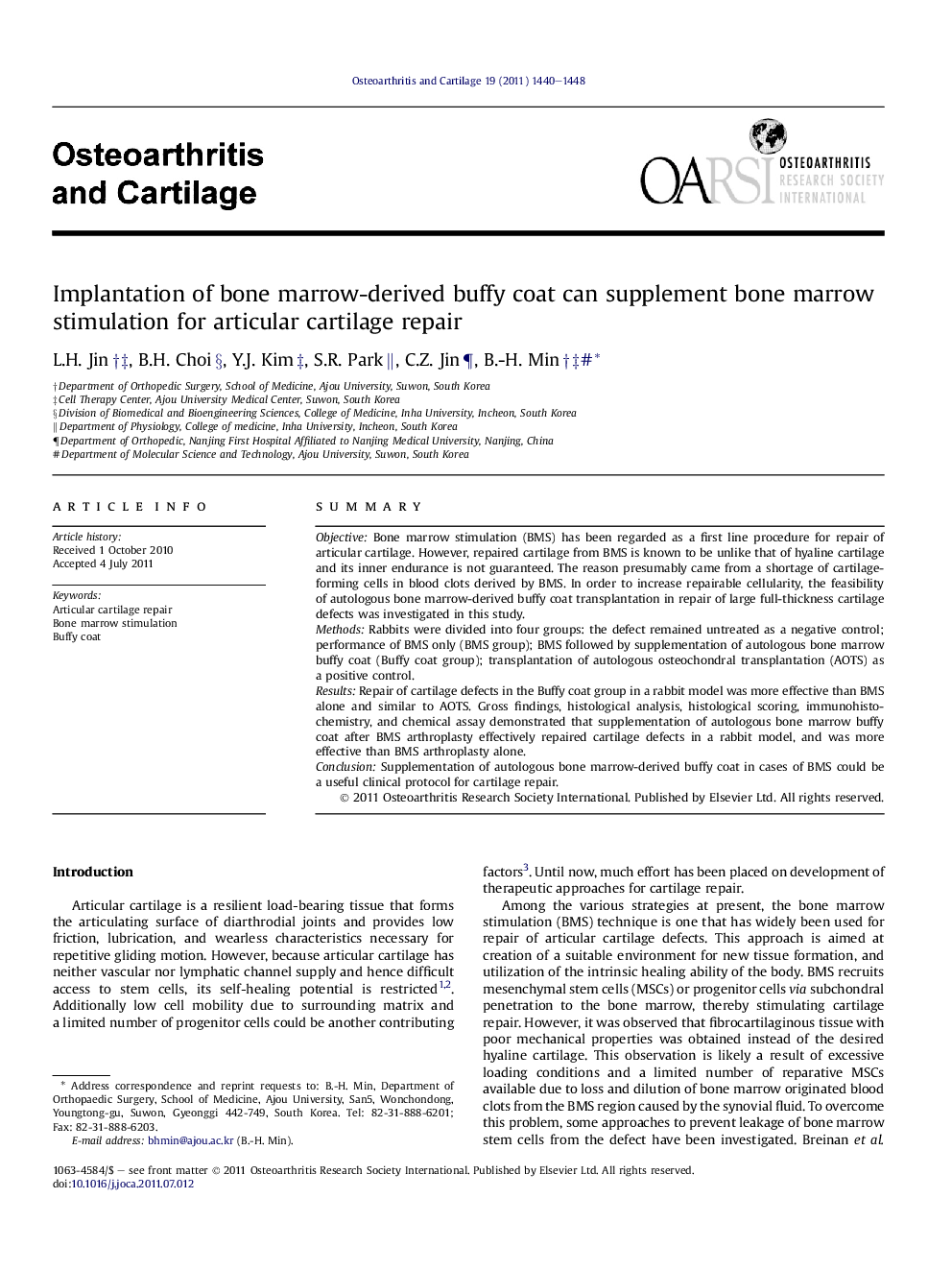| Article ID | Journal | Published Year | Pages | File Type |
|---|---|---|---|---|
| 3380253 | Osteoarthritis and Cartilage | 2011 | 9 Pages |
SummaryObjectiveBone marrow stimulation (BMS) has been regarded as a first line procedure for repair of articular cartilage. However, repaired cartilage from BMS is known to be unlike that of hyaline cartilage and its inner endurance is not guaranteed. The reason presumably came from a shortage of cartilage-forming cells in blood clots derived by BMS. In order to increase repairable cellularity, the feasibility of autologous bone marrow-derived buffy coat transplantation in repair of large full-thickness cartilage defects was investigated in this study.MethodsRabbits were divided into four groups: the defect remained untreated as a negative control; performance of BMS only (BMS group); BMS followed by supplementation of autologous bone marrow buffy coat (Buffy coat group); transplantation of autologous osteochondral transplantation (AOTS) as a positive control.ResultsRepair of cartilage defects in the Buffy coat group in a rabbit model was more effective than BMS alone and similar to AOTS. Gross findings, histological analysis, histological scoring, immunohistochemistry, and chemical assay demonstrated that supplementation of autologous bone marrow buffy coat after BMS arthroplasty effectively repaired cartilage defects in a rabbit model, and was more effective than BMS arthroplasty alone.ConclusionSupplementation of autologous bone marrow-derived buffy coat in cases of BMS could be a useful clinical protocol for cartilage repair.
